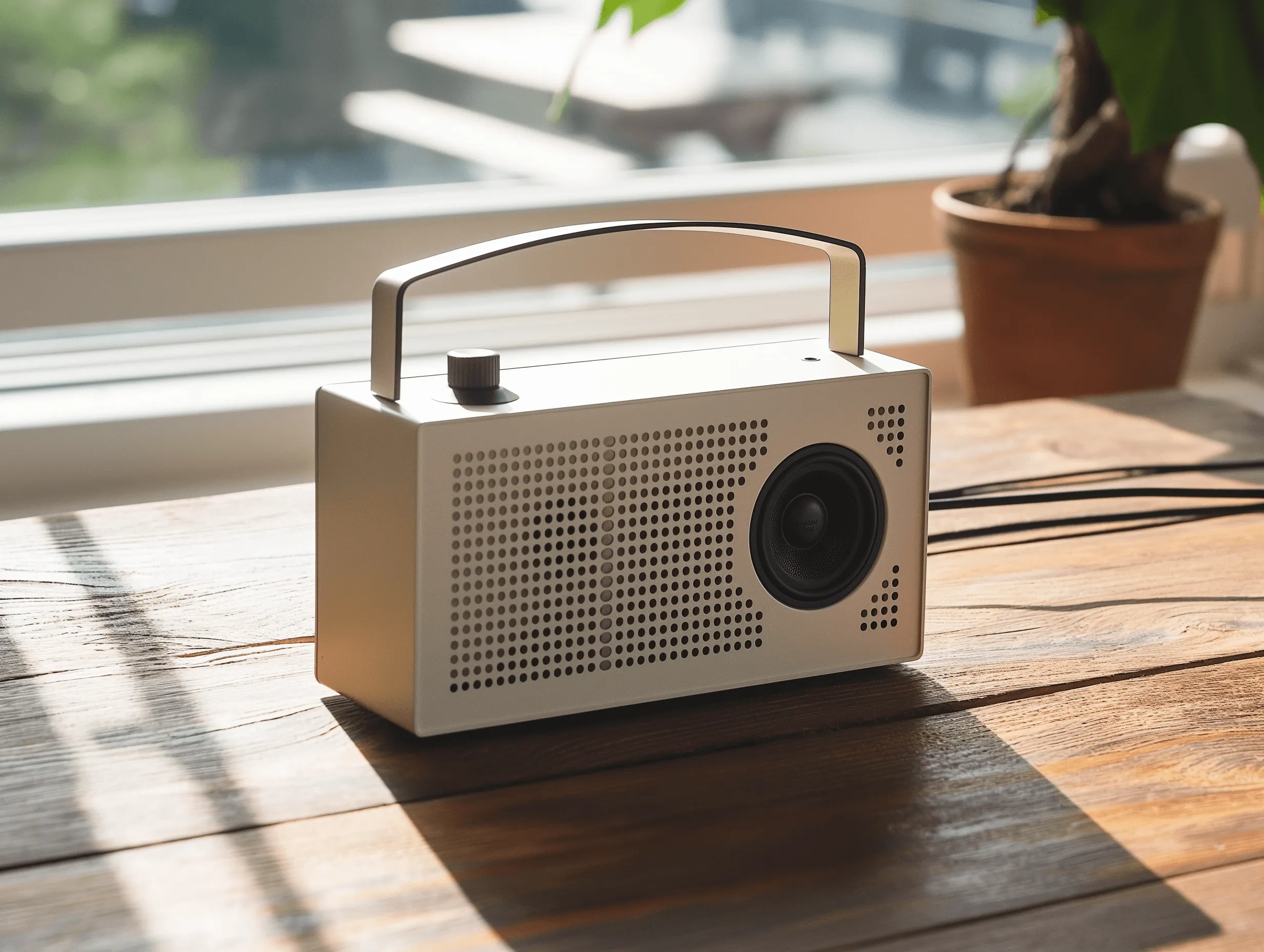
From Walkmans to Wearables: Gadget History Fast‑Forward
Remember when your biggest tech worry was whether your Walkman had enough battery for that road trip? 😅 Now we're literally wearing computers that track everything from our heart rate to our sleep cycles - and yes, even our intimate moments. The journey from those chunky yellow headphones to today's sleek wearables is honestly mind-blowing, and it's reshaping how we think about our bodies, our pleasure, and our overall wellness in ways nobody saw coming.
Let's be real - technology and intimacy weren't always the best of friends. But somewhere between the invention of the transistor radio and the Apple Watch, something shifted. Our gadgets stopped being just entertainment devices and started becoming intimate companions that know us better than we know ourselves.
The Walkman Era: When Tech Was Just Fun
Picture this: it's 1979, and Sony just dropped the TPS-L2 Walkman. For the first time ever, you could take your music anywhere without lugging around a boom box. Revolutionary? Absolutely. Intimate? Not so much.
Back then, our relationship with technology was pretty straightforward. Gadgets were tools - they played music, showed movies, or helped us communicate. Nobody was thinking about how a device might track their arousal patterns or suggest better positions for improved circulation during intimate moments.
The Walkman generation experienced tech as something external. You put on headphones, pressed play, and that was it. There was no data collection, no health monitoring, no AI learning your preferences. It was beautifully simple and completely separate from your personal wellness journey.
The Social Shift Nobody Saw Coming
But here's what's fascinating - even those early portable devices started changing how we related to our bodies and spaces. Suddenly, you could create your own private sound bubble anywhere. That subway ride became your personal concert hall. Your morning jog got a soundtrack that matched your heartbeat.
This was actually the first hint of what was coming: technology that could enhance personal, intimate experiences. We just didn't realize it yet.
The Digital Revolution: Getting Personal
Fast-forward to the 90s and early 2000s. Computers got smaller, phones got smarter, and suddenly we were carrying around devices that knew our contacts, our schedules, our favorite websites. The internet changed everything - including how we learned about our bodies and sexuality.
I remember when having a computer with internet access felt like having the world's library at your fingertips. For sexual wellness and education, this was huge. People could finally research intimate health topics privately, without the awkwardness of asking a pharmacist about personal lubricants or wondering if their experiences were "normal."
This era introduced us to the concept of digital privacy around intimate topics. Your browser history became sacred territory. Password protection wasn't just about security - it was about maintaining personal boundaries around sensitive information.
The Birth of Intimate Tech
Somewhere in this digital chaos, the first wave of intimate technology emerged. We're talking about the early versions of what would eventually become today's sophisticated pleasure products and wellness devices. These weren't your grandmother's gadgets - they were designed specifically with human pleasure and wellness in mind.
The key difference? These devices were created to work with your body, not just for your entertainment. That's a massive shift in how we think about the relationship between humans and technology.
The Smartphone Revolution: Always Connected
Then came smartphones, and everything changed again. Suddenly, we had powerful computers in our pockets that were always on, always learning, always connected. The iPhone launched in 2007, and by 2010, there were apps for literally everything - including intimate wellness.
This is where things got interesting for sexual health and wellness. Apps started appearing that could track menstrual cycles, monitor fertility, provide sex education, and even control intimate devices remotely. Your phone became not just a communication tool, but a wellness companion.
According to research from the Kinsey Institute, over 70% of adults now use some form of digital technology to enhance or track aspects of their sexual wellness. That's a massive shift from the Walkman era when technology and intimacy lived in completely separate worlds.
Privacy Becomes Everything
With great connectivity came great responsibility - especially around intimate data. Users became more aware of digital privacy, data security, and who had access to their most personal information. This awareness shaped how intimate tech companies approached product development and data handling.
The smartphone era taught us that convenience and privacy needed to coexist. Nobody wanted their intimate wellness data showing up in targeted ads or being shared with third parties without consent.
Enter the Wearables: Your Body's New Best Friend
Now we're in the wearables era, and tbh, it's pretty amazing. These devices don't just sit on your nightstand or in your pocket - they live on your body, learning your rhythms, understanding your patterns, and providing insights that were impossible just a decade ago.
Modern wearables can track everything from your resting heart rate to your sleep quality to your stress levels. For sexual wellness, this data is incredibly valuable. Better sleep means better libido. Lower stress levels often correlate with improved intimate experiences. Understanding your body's natural rhythms can enhance everything from fertility planning to optimizing energy for intimate moments.
Some of today's most innovative wearables are specifically designed for intimate wellness. We're talking about devices that can track arousal patterns, monitor pelvic floor health, provide biofeedback during intimate moments, and even suggest personalized wellness routines based on your body's unique responses.
The Integration Game
What's really wild is how seamlessly these devices integrate with other aspects of your health and wellness routine. Your fitness tracker knows when you've had a great workout. Your sleep monitor understands your recovery patterns. Your meditation app tracks your stress management. When you combine all this data, you get a holistic picture of your overall wellness - including your sexual health.
This integration represents a fundamental shift in how we approach intimate wellness. Instead of treating sexual health as something separate from overall health, we're finally understanding that everything is connected.
The Intimacy Revolution: Where We Are Now
Here's where things get really interesting. Today's intimate technology isn't just about tracking or monitoring - it's about enhancement, education, and empowerment. We've moved from passive consumption (like listening to a Walkman) to active participation in our own wellness journey.
Modern intimate devices use everything from AI to biometric feedback to create personalized experiences. They learn your preferences, adapt to your responses, and evolve with your changing needs. It's like having a wellness coach that never judges, never gets tired, and is available 24/7.
Dr. Eli Coleman from the University of Minnesota's Program in Human Sexuality notes that technology has "democratized access to sexual health information and tools in ways that were unimaginable even twenty years ago." This democratization is particularly important for people who might not have access to comprehensive sexual education or healthcare.
Breaking Down Barriers
One of the most powerful aspects of modern intimate technology is how it's breaking down traditional barriers around sexual wellness. Geography, age, physical limitations, relationship status - none of these factors limit access to tools and information that can improve intimate wellness.
Wearable technology specifically has made wellness tracking and enhancement accessible to people with various physical abilities and needs. Voice activation, haptic feedback, and intuitive interfaces mean that intimate wellness technology can be truly inclusive.
What's Next: The Future of Intimate Tech
So where are we headed? The trajectory from Walkmans to wearables suggests we're moving toward even more integrated, personalized, and intuitive intimate technology. We're talking about devices that might predict your needs before you're even aware of them, technology that adapts in real-time to your body's responses, and AI that can provide personalized wellness coaching based on your unique patterns and preferences.
Virtual and augmented reality are already starting to play roles in intimate wellness, offering everything from educational experiences to therapeutic applications. Imagine being able to explore anatomy in 3D, practice communication skills in safe virtual environments, or receive personalized wellness coaching from AI that understands your specific needs and goals.
The integration of biometric data, AI learning, and personalized feedback loops suggests that future intimate technology will be incredibly sophisticated while remaining user-friendly and accessible.
The Privacy Evolution
As intimate technology becomes more sophisticated, privacy and security measures are evolving too. End-to-end encryption, local data processing, and user-controlled data sharing are becoming standard features rather than premium add-ons.
Future intimate technology will likely give users even more control over their data, with granular privacy settings and transparent data usage policies. The goal is technology that enhances intimacy without compromising privacy or security.
Frequently Asked Questions
How do modern wearables actually improve intimate wellness?
Modern wearables improve intimate wellness by tracking key health metrics that directly impact sexual health - things like sleep quality, stress levels, heart rate variability, and recovery patterns. Better overall health typically translates to improved libido, energy levels, and intimate experiences. Some specialized devices also provide biofeedback, pelvic floor training, and personalized wellness recommendations.
Are intimate wellness wearables safe and private?
Reputable intimate wellness devices use advanced encryption, local data processing, and strict privacy protocols to protect user information. Look for devices that offer transparent privacy policies, user-controlled data sharing, and certifications from recognized security organizations. Always research a company's privacy practices before purchasing intimate technology.
What's the biggest difference between early tech and today's intimate devices?
The biggest difference is the shift from passive consumption to active, personalized enhancement. Early tech like Walkmans were one-size-fits-all entertainment devices. Today's intimate technology learns your preferences, adapts to your responses, and provides personalized feedback and recommendations based on your unique patterns and needs.
How has smartphone technology changed sexual wellness education?
Smartphones have democratized access to sexual wellness education by providing private, convenient access to information, apps, and tools. People can research intimate health topics, track their wellness patterns, access educational content, and even consult with healthcare providers remotely - all from the privacy of their own device.
What should I look for in intimate wellness technology?
Look for devices that prioritize privacy and security, offer personalized features, have positive user reviews, and come from reputable companies with transparent business practices. Consider your specific needs and goals, and choose technology that enhances rather than complicates your wellness routine. Medical-grade materials and certifications are also important for devices that come into contact with your body.
Wrapping Up: The Journey Continues
The evolution from Walkmans to wearables represents more than just technological advancement - it's a fundamental shift in how we relate to our bodies, our wellness, and our intimate lives. We've gone from devices that entertained us to devices that understand us, enhance us, and empower us to take control of our own wellness journey.
What's most exciting is that we're still in the early stages of this revolution. The intimate technology of today will probably seem as quaint as a Walkman does now when we look back from 2040. But the core principle remains the same: technology should enhance human experience, not replace it.
Your wellness journey is uniquely yours, and the technology you choose should reflect that. Whether you're just starting to explore intimate wellness tech or you're ready to upgrade to the latest wearables, remember that the best device is the one that makes you feel more connected to your body, more confident in your choices, and more empowered in your intimate life. 💕
The future of intimate technology is bright, personalized, and incredibly exciting. We've come so far from those chunky yellow headphones, and honestly? The best is yet to come.
.png)
.jpg)











Comments: